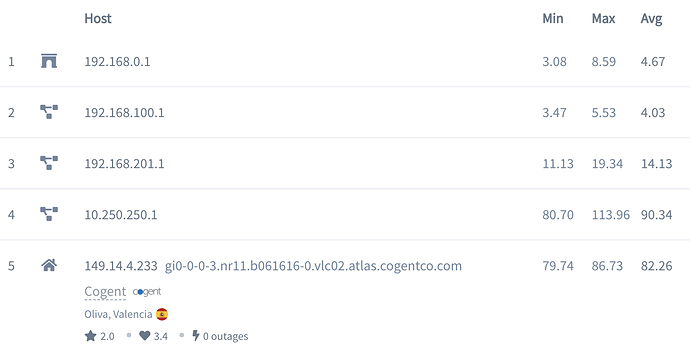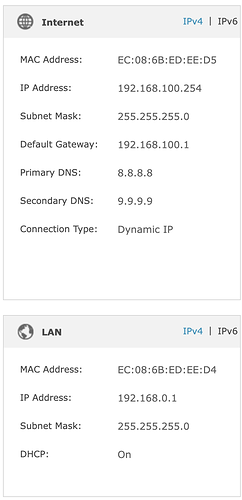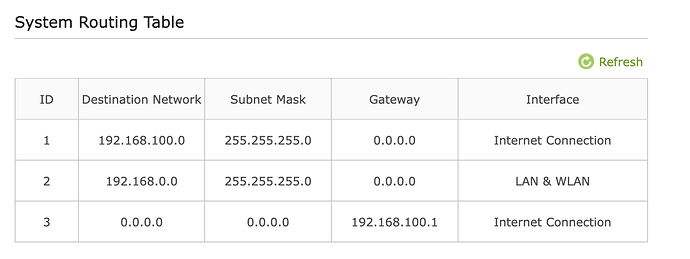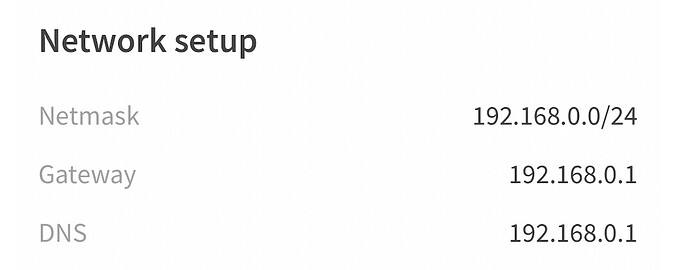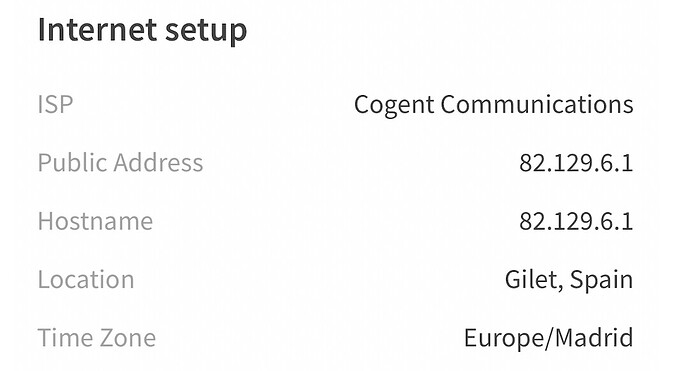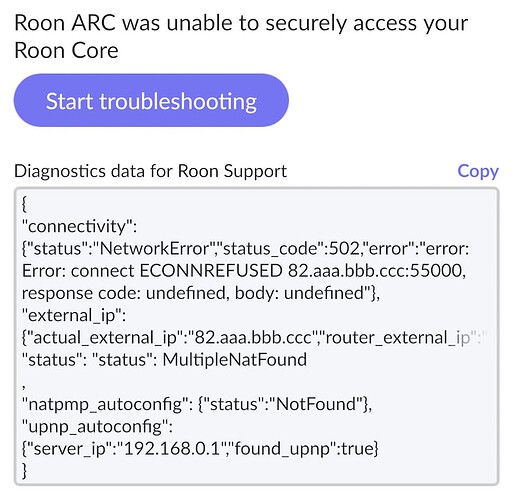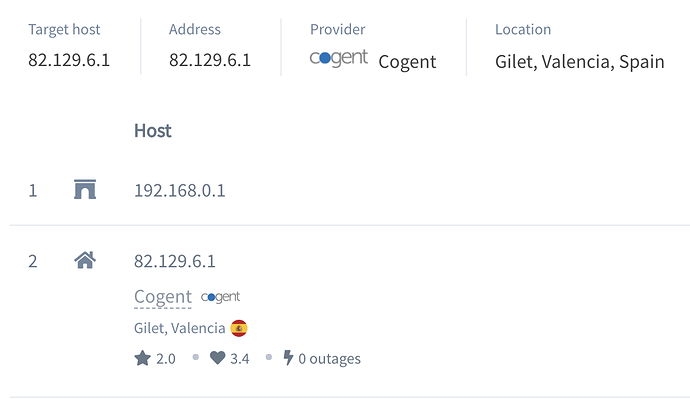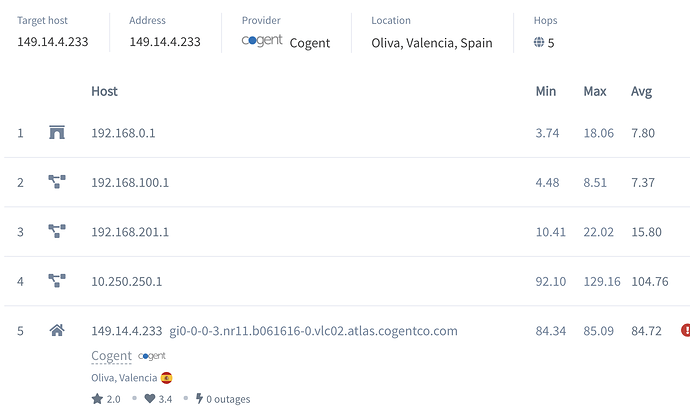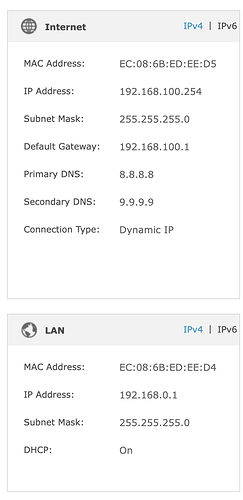Hi Roland,
Without an overview of the topology used at your premises and the infrastructure used to connect the radio links to the internet, it is difficult to formulate an answer.
But i will try!
Based on the above and guessing:
Your own network range at your premises is 192.168.0.0/24
Behind your router is the radio link network range for your (own) connection 192.168.100.0/24 to the ISP.
At the ISP your external IP is 82.192.6.1 which is your ISP’s external internet facing address.
If you check the WAN interface on your home router, you may find the network information for the link to the ISP infrastructure.
The IP range is most certainly the range 192.168.100.0/24 with your WAN interface address being 192.168.100.254.
Thus having double NAT!
192.168.0.0/24 -[ NAT1 ]- 192.168.100.0/24 -[ NAT2 ]- Maybe 82.192.6.1 or more (non) route able networks?
Above is just guessing based on provided information and might not be correct at all!
The isp’s website is in Spanish so not a good resource for me.
It is possible to investigate what the topology to the internet might be like with tools, but YMMV.
How to come to a working solution is a different story.
Good luck!
